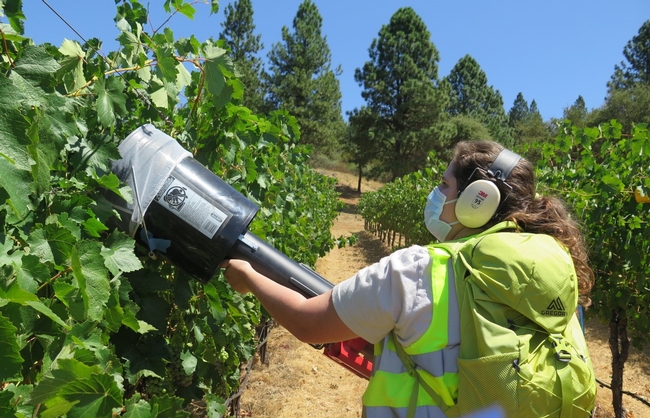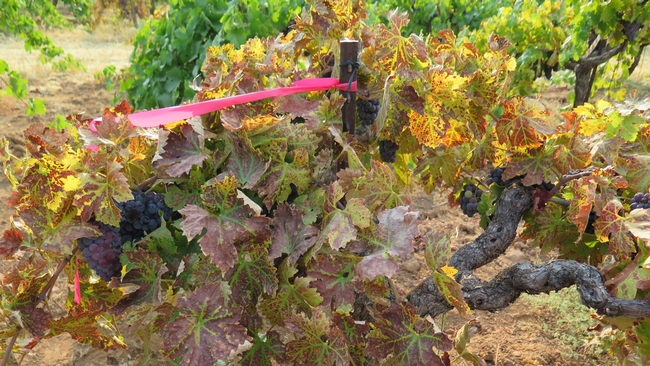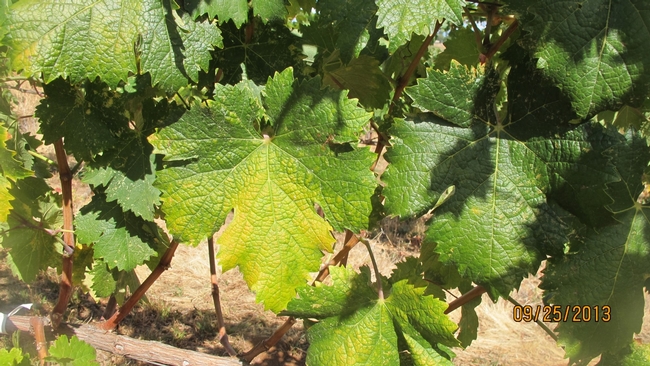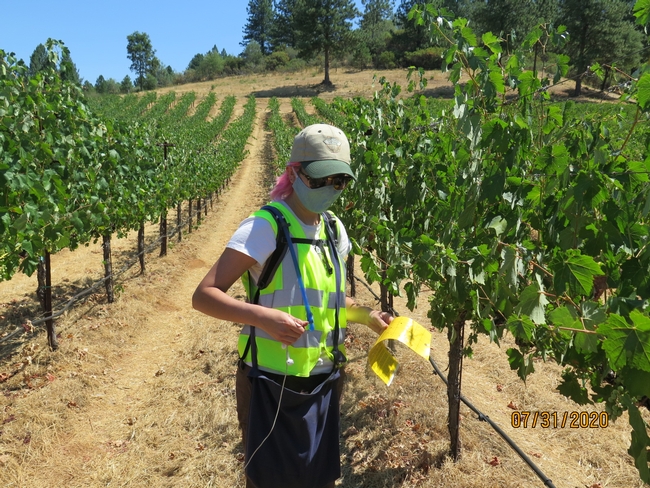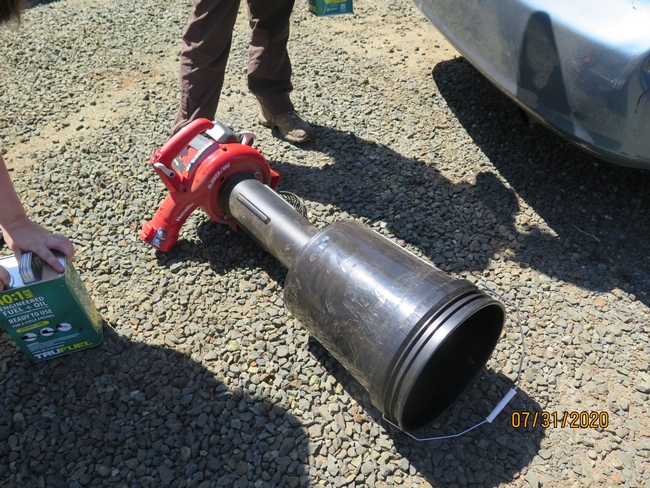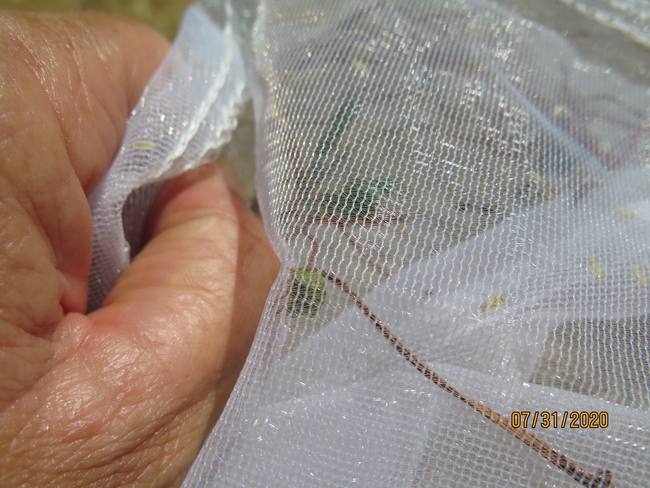Kelsey McCalla, post-doc in Dr. Kent Daane's lab at UC Berkeley, "vacuums-up" potential red blotch vectors
Red blotch symptoms in Zinfandel
Red blotch symptoms in Vermentino, a white grape variety
Kristen Flores takes down yellow sticky traps
The Daane lab joins Houston Wilson and other researchers on a nationwide search to confirm the three cornered alfalfa treehopper as a red blotch vector and/or identify other insects that are spreading the disease. Part of that work includes sampling for suspect insects using the D-vac and yellow sticky traps in vineyards where red blotch spread is evident. The trap count information is used to understand the life cycles of these potential vectors. Wilson, who was one of several speakers covering red blotch research progress during my 2020 Foothill Grape Day, recently published a newsletter on his work of the seasonal ecology of the treehopper in North Coast vineyards. Our foothill monitoring will help us understand if the insect's life cycle is similar here as compared to what is known to occur in the cooler N. Coast.
And no, those vineyard fall colors are not a good thing! This is the time of the year when GRBaV symptoms become evident in red varieties in the vineyard-the characteristic red "blotches" on the leaves for which the disease is named begin to show in summer and become more visible as harvest nears and the season progresses. (Note: the disease affects both white and red varieties. In whites, the "blotches" are yellow and more difficult to see). While diseased vineyards turn red, healthy vines remain green, then gold, in fall.
Thanks to the hard work of those like McCalla and Flores, even during this time of the pandemic (and wearing masks while working outdoors in summer heat is not fun, let me tell you), we will get closer to solving the red blotch mystery.
The D-vac Bug Vac, a wonderful sampling tool.
I spy with my little eye...a three cornered alfalfa treehopper sucked up by the D-vac!
